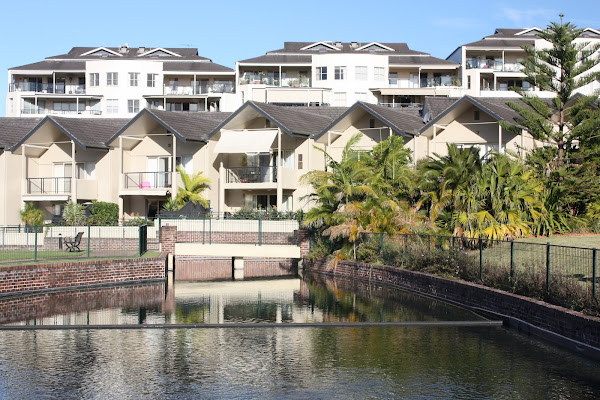The suburbs
Peppereornpero – The suburbs
There has been lots of work on urban history, and rural life has come in for its own specialized study for almost two centuries as well. But what about the suburbs? Is there anything distinctive about suburban life in the United States that suggests that it needs its own sociology and history? Kevin Kruse and Tom Sugrue think so, and their volume, The New Suburban History (Historical Studies of Urban America), makes the case. Kruse and Sugrue think that this history is actually crucial to understanding many things about the United States since the 1950s.
In the still-developing history of the postwar United States, suburbs belong at center stage. The rise and dominance of suburbia in America after the Second World War is inescapable. In 1950, a quarter of all Americans lived in suburbs; in 1960, a full third; and by 1990, a solid majority. (1)
 |
| The suburbs |
This question divides naturally into two tracks. First, has there been a distinctive sociology of suburban life that needs to be tracked? And second, does this social-demographic fact about post-war America have important consequences for larger issues — electoral politics, race, education, cultural homogenization, and economic competitiveness? Kruse and Sugrue think that suburbanization has implications for each of these topics, and the volume makes the case.
The subject of suburban history isn't a new one. But what is new about the approach taken by the contributors is the fact that they treat the suburbs as part of a system. They treat regions as metropolitan systems including inner cities and multiple suburban places.
[The contributors] take a broader metropolitan perspective, paying attention to the place of suburbs in political and economic relationship with central cities, competing suburbs, and their regions as a whole. (6)
Another distinctive part of their approach is that they look at suburbanization as chiefly a long-running political process. It was the result of many layers of federal, state, and local public policies. Here is how David Freund puts it in his essay:
The modern American suburb is heavily indebted to the federal government. For decades writers have chronicled this debt, documenting how state policy fueled the rapid suburban growth that has so decisively shaped U.S. politics and culture since World War II. … Meanwhile the nation's cities, and especially the minority populations concentrated within them, were left behind. (11-12)
And it led to a powerful new set of political dynamics of competition.
The history of suburbanization and its consequences is, in large part, a question of power. (6)
In fact, the editors point out that a number of key electoral issues in the past half century have emerged out of the conflicts of interest that arose out of the shift of population to the suburbs and competition between suburban communities — for example, the anti-tax movement that originated in California. (Robert Self analyzes this dynamic in his contribution, "Prelude to the Tax Revolt.")
Arnold Hirsch picks up the issue of segregation in his essay.
The cumulative effect of federal housing policies … was to produce a federally sponsored social centrifuge that not only separated black from white but increasingly linked the latter to placement on the economically dynamic fringe as opposed to the crumbling core. (35-36)
It is also interesting to understand in hindsight that these implications of federal housing policy were fairly clearly understood on both sides — by advocates of a radicalized housing policy and by advocates for the civil rights of African Americans. Hirsch summarizes the prescient views of George Nesbitt:
In 1952, Racial Relations Service officer George B. Nesbitt addressed the meeting of the National Association of Intergroup Relations Officials and warned that the programs then being implemented under the rubric of urban redevelopment would establish the spatial and psychological framework within which the civil rights struggle would take place in "decades to come". The racial implications of the program were awesome and could not be avoided. (52)
(Hirsch's own urban history of Chicago is well worth reading; Making the Second Ghetto: Race and Housing in Chicago 1940-1960 (Historical Studies of Urban America)
Kruse and Sugrue and most of the contributors to the volume emphasize the range of variation that has existed in American suburbs. The racial and class homogeneity that earlier historians have highlighted has a realistic core — Federal housing policies certainly contributed to de facto segregation across metropolitan regions — but the editors note that there were a fair number of embedded clusters of minority residents and low-income workers as suburbs developed. And these facts of race and class diversity — and sometimes conflict — have had large consequences.
Detroit and its suburbs provide an almost pure case for the processes described in the volume. White flight beginning in the 1950s, the provision of county and municipal governments, and a very strong separation between Oakland County, Wayne County, and the city of Detroit illustrate many of the social and economic dynamics that are described in the volume. This has left a legacy of fragmented governance where it is very difficult to achieve anything like a shared regional perspective on problems that cross over the whole region. The fate of unified mass transit (which still doesn't exist in the region) and the bitter arguments among governments over the fate of Cobo Hall point to the failure of regionalism to date and the sub-par outcomes that are the result for almost all the 4.5 million people who live in the metropolitan region. Tom Sugrue's The Origins of the Urban Crisis: Race and Inequality in Postwar Detroit (Princeton Studies in American Politics) does a masterful job of telling the story of how we got here.
Kruse and Sugrue and the contributors to the volume succeed in establishing the importance of suburban history within American social development and public policy change, and they do a good job of drilling down into the policy choices that were made at all levels leading to this course of development in the U. S. They also demonstrate how the politics and sociology of race relations played an essential role in this history. What the volume doesn't even try to do is to get at the sociological dynamics that this form of residence, work, and socialization created. So plainly there is still a lot to do in the field by sociologists and ethnographers to capture the suburban experience.
(It is interesting to consider that there is a significant slice of the American population who live in places that are neither urban, suburban, nor rural. These are people who live in towns and small cities — population 50,000 to 250,000. This is small-city America — Peoria, Youngstown, Grand Rapids, Indianapolis, Orlando. These places often have many of the same challenges as major cities, without the dynamism and opportunity that are part of the scene in Chicago, Miami, Seattle, or New York. It would be very interesting to see data on things like social and geographical mobility, innovative business ideas, and average educational levels for places like these. Richard Florida has made the case for large cities and their inherent dynamism; do any of these effects extend down the scale to Peoria or Syracuse? Take Peoria, Rockford, and Chicago — what does a detailed history of Illinois electoral politics and public policy tell us about the relations of competition, cooperation, and dominance that these three cities demonstrate over time?)
 Peppereornpero.blogspot.com
Peppereornpero.blogspot.com
Get an updated selection of information and articles every day from Peppereornpero.blogspot.com. Let’s join the Telegram group “Peppereornpero.blogspot.com Information Update” how click the link https://t.me/Peppereornpero.blogspot.com, then join. You must first install the Telegram application on your cellphone.
This article is sourced from google.com, understandingsociety.blogspot.com, with the title “The suburbs” Click to read.
Editor : Editor Peppereornpero.blogspot.com




